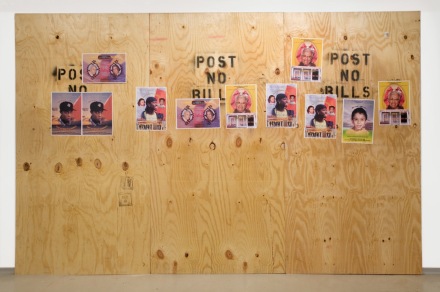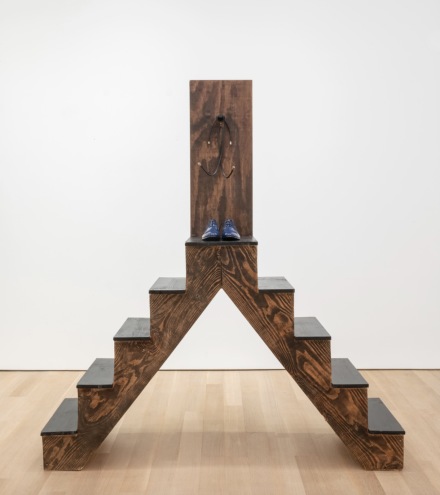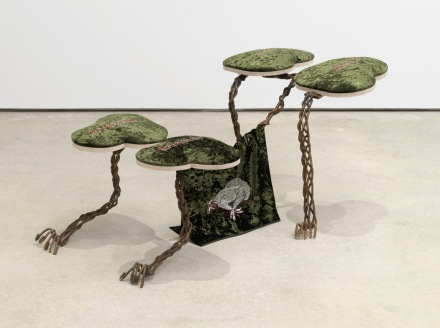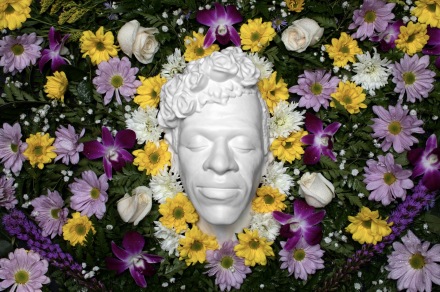
Dread Scott, Never Forget, Never Forgive: They Left Us to Die (2006), via P·P·O·W
This Septamber at P·P·O·W, the gallery is presenting RECOVERY, a group exhibition exploring art as a critical gesture towards collective resistance and remembrance. Acting as individual altar spaces, the works presented in this exhibition form commemorative sites to recover knowledge, provide proof, overcome loss, and contain memories.
Throughout the show, art is presented as a site for reflection, monumental less in scale and scope than in the psychological sense. The works here are spaces and sites designed as memorials, as sites of healing and reflection, of reclamation of political contexts and social memories. Unearthing realities buried beneath layers of distorted visual understandings of historic representation, RECOVERY focuses on the notion of “insurgent commemoration”, defined by social justice scholar Roger Simon as “attempts to construct and engage representations that rub taken-for-granted history against the grain so as to revitalize and rearticulate what one sees as desirable and necessary for an open, just and life-sustaining future.”

Daniel T. Gaitor-Lomack, Magic Man (Bootleg Cable) (2020-2021), via P·P·O·W
The end result is a space that presents as a devotional space and construction site in equal measure, looking backwards even as the artists on view use their work to build new awarenesses and visions of a shared future. In Chiffon Thomas’s work, concrete, rocks, nails, rebar wire, and wooden planks are painted a stark white, with one work held aloft by an electrical lift, creating a sort of makeshift lighthouse. By contrast, Dread Scott’s Never Forget, Never Forgive: They Left Us to Die (2006) memorializes individuals killed by Hurricane Katrina. Destroyed and remade whenever exhibited, the wheat-pasted posters on plywood panels with “Post No Bills” stenciled overtop detail how each of the remembered souls lived and died and are based on “martyr” posters of Palestinians killed by Israel pasted all over Palestine. Bearing witness to yet another facet of American life, Carlos Reyes’ saltwaterfarm serves as a monolith of residue. Comprised of 5,264 plastic egg crates, hollowed out chicken eggs, and industrial sand, Reyes’ towering translucent structure confronts the repetition, accumulation, and constraint of our society.

Brittni Ann Harvey, Lamb of God (Bowing Robot Dog) (2021), via P·P·O·W
The notions of shared spaces and political awarenesses sit at the core of the show, painting ways forward in a critical time of re-evaluation. Through the works curated here, RECOVERY explores questions of how to inhabit space with renewed urgency. Through the process of art-making, we record, recount, and recover previously silenced truths that the essentialism and prejudices of visual politics have not been able to suppress.
The show is on view through October 9th.

Carlos Motta, Marsha P. Johnson from the Series Still Lives (2021), via P·P·O·W
– D. Creahan
Read more:
RECOVERY [Exhibition Site]



